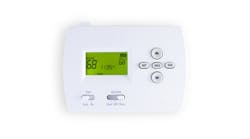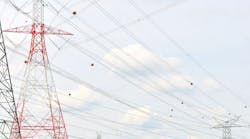It is an age-old story playing out at utilities the world over: As asset populations grow and age, the resources required to tend to troubled assets have struggled to keep pace. A review of asset-age profiles by American Electric Power (AEP) revealed that 33% of its power transformers are at least 50 years old and approximately 18% are 60 years old or more.
Failure performance for transformers follows the typical bathtub curve. As this population marches onward toward the end of life and the (expected) steep rise in failure rate, an increasing share of these assets can be expected to either fail or demand great expense to extend their lives. This underscores the operational challenges presented by today's aging transmission infrastructure. In AEP's case, these challenges have catalyzed a new way of managing the health of vital assets across the utility's transmission business.
Establishing an Asset Health Center
AEP is an integrated utility, operating in 11 states throughout the United States, with approximately 39,000 miles (62,764 km) of transmission lines and more than 900 transmission substations. Transmission power transformer and circuit breaker populations exceed 1,700 and 7,000, respectively.
AEP first outlined industry benefits of what it termed the “asset health center” concept in 2007. The utility then encouraged collaborative development of a platform that would integrate its existing infrastructure and systems together with new condition models to transform operational data into actionable decision-support information. Some call this type of integration “OT/IT convergence” for its melding of operational technology and information technology. AEP views it as an opportunity to transform its asset management processes by leveraging a smarter transmission grid.
Fast-forward to 2013 and AEP is now implementing this asset health center solution — the first of its kind — across its entire transmission network. By turning real-time and historical data, gathered from across the network, into meaningful and timely insights about asset health, AEP's asset health strategy is anticipated to benefit both customers and shareholders by helping the utility meet important objectives:
-
Prevent failures to achieve system reliability, availability, performance and compliance goals
-
Optimize workforce productivity and safety by targeting maintenance where it is most needed
-
Support prioritized asset replacement investment decisions.
Strategically Addressing Asset Health
AEP faced a range of issues common to transmission operators with aging infrastructures. These challenges included asset replacement or repair decisions, moving beyond frequency-based inspection, attaining visibility of real-time operating conditions of vital assets, meeting evolving compliance requirements, actual and anticipated retirement of skilled technicians and engineers, and ever-present budgetary pressures to hold down operations and maintenance (O&M) costs. No stranger to innovation, AEP sought out a solution for addressing these and other asset-related challenges.
AEP found an opportunity in something many utilities regard as yet another challenge: the rising tide of data collected. Sensors and monitors, including intelligent relays, make operational data available at unprecedented rates — yet few utilities are equipped to effectively harness this deluge of data and turn it into practical and actionable information. A combination of technologies would be required to do this, which is where AEP set its sights.
The path AEP wanted to take would allow it to meet specific goals:
-
Automate collection and aggregation of data from smart sensors and equipment monitoring systems to achieve more timely insight into asset performance across the grid.
-
Apply advanced analytics to both real-time and historical data to help drive decisions and actions that maximize asset health and performance.
-
Advance its asset management capabilities through comprehensive business intelligence.
With this direction in mind, AEP reviewed available technologies and eventually selected an approach that involved collaboration with global power and automation vendor ABB. AEP and ABB developed a new system to take advantage of the collective expertise of both industry-leading companies.
Moving to a Next-Generation Solution
Condition-based predictive maintenance concepts are not new. Many utilities also have conducted experiments in real-time monitoring. Asset health solutions have been elusive because of the inability to identify a solution broad-based and rational enough to warrant committed action. Oftentimes, monitoring experimentation involves complex, costly and high-maintenance local systems that stand alone, dedicated to a single apparatus. This is not a scalable solution. It requires too dear a cost and frequent site maintenance of the monitoring solution.
When AEP conceptualized its new approach to an asset health center, it established a few guiding principles:
-
Leverage existing infrastructure and information systems.
-
Use sensing that targets failure modes and is simple, robust, affordable, and low or no maintenance.
-
Focus intelligence at a central collection point.
Anatomy of the Asset Health Center
The asset health center now being implemented at AEP arose from the AEP-ABB Transmission Technology Alliance, an arrangement designed to leverage each company's expertise and interests to deliver innovative transmission system solutions. The resulting asset health center solution integrates both companies' equipment-based operational technology with information technology from Ventyx, ABB's industrial enterprise software group.
AEP's multiyear implementation project has begun, starting with the utility's extra-high-voltage transformers. The long-term vision is to proceed through AEP's entire asset portfolio to encompass all of its major asset types, including transformers, breakers and, at critical facilities, substation batteries.
A salient feature of AEP's asset health center implementation is the ability to bring together the full range of disparate asset information, asset management algorithms based on deep subject-matter expertise and intelligent software solutions, all on a single platform that is extensible to cover all asset types. Data can come from any source, on-line or off-line, real time or batch. To try to accomplish this manually would be time prohibitive, even with highly skilled data technicians and analysts, and to attempt to automate it piecemeal using point solutions would result in disconnected processes, incomplete views and excessive data management costs.
In practice, AEP is leveraging its existing infrastructure and designs to deliver digital equipment history records, on-line monitoring and operational supervisory control and data acquisition data to the asset health center. There, asset condition monitoring and performance algorithms (for example, asset performance and risk of failure) can be applied and a full spectrum of business intelligence tools and techniques (for example, drill-down capabilities, key performance indicators and real-time information dashboards) put to use on comprehensive data sets to power a wide range of decision processes, both strategic and operational. To augment existing infrastructure, some new monitoring equipment is built in to new equipment and will be added as a retrofit to selected existing assets.
Achieving Projected Benefits
AEP had thoroughly outlined the expected benefits of the asset health center:
-
Fewer catastrophic equipment failures. Equipment failures and their many consequences are expected to decline through timely asset condition visibility, predictive analytics and risk modeling.
-
Prioritized maintenance and replacement. Grid-wide awareness of equipment trouble, failure risk or end of life help to prioritize repair and replacement, reducing both failures and O&M costs.
-
Optimized asset investment strategies. Comprehensive and accurate asset condition information is expected to help optimize AEP's asset replacement strategy and time line.
-
Maximized network performance. By unlocking the value of a smarter grid, AEP expects to maximize the performance and reliability of its transmission network.
-
Improved productivity. Improved maintenance prioritization and planning are expected to help drive optimal use of skilled human assets and maintenance equipment.
-
Increased safety. Better assessment of safety risks through improved visualization and analytics will help to protect AEP workers, the public and the environment.
-
Enhanced regulatory compliance and reporting. Automated data capture, analysis and report generation will streamline compliance and regulatory reporting and audit preparations.
-
Increased operational efficiency. The linkage of operations to condition-based maintenance and workforce management is expected to result in improved outage management and downtime.
Lessons Learned
The deployment of an asset health center at AEP is a continuing process, with the upfront planning and scoping accomplished and the initial implementation underway. Much has been learned thus far that is applicable to any organization undertaking such a project:
-
Set high-level goals. So much of the success of a project like this depends on engaging stakeholders from across an organization to help set long-term objectives. AEP's goals include safety, compliance, operational excellence and financial performance. Such long-term objectives are necessary to scoping the project and measuring its success over time.
-
Identify clear business requirements. It is necessary to prioritize the main business requirements to avoid project creep. AEP's priorities include managing and prioritizing maintenance needs, accelerating assessment of asset conditions, condition visualization, and prioritizing and managing capital investment.
-
Implement a comprehensive solution. Asset health is not a silo; rather, it touches multiple operational business units and cannot be approached piecemeal. An asset health center will transform the way a utility approaches asset maintenance, and there are a lot of moving parts to be integrated into a whole. Thus, it is important to start with a whole solution that can bring together any information from any source and combine it with domain expertise, smart software (expert algorithms and business intelligence tools) and smart hardware (such as sensors and monitors).
Meeting the Challenge
Aging equipment is a long-term challenge for electric utilities. This will require focused and consistent efforts — along with innovative technology — to meet both current and coming challenges. Fortunately, technology now exists and is being implemented at AEP to enable an end-to-end asset health management system that manages the vast amounts of information utilities, like AEP, generate; analyzes it to provide actionable insights for managing assets across the grid; and shares knowledge in a meaningful way to maximize its value throughout the utility enterprise.
Jeff Fleeman ([email protected]) is director of advanced transmission studies and technologies at American Electric Power, where his responsibilities include system analysis, technology development, HVDC/FACTs, and asset performance and renewal programs. He holds BSEE and MSEE degrees from Ohio State University, chairs EPRI's Transmission & Substation Advisory Council and chaired EEI's Transmission Committee 2005-2007. He is a member of CIGRÉ, a senior member of IEEE and is a professional engineer.
Companies mentioned:
ABB | www.abb.com
American Electric Power | www.aep.com
Ventyx | www.ventyx.com

